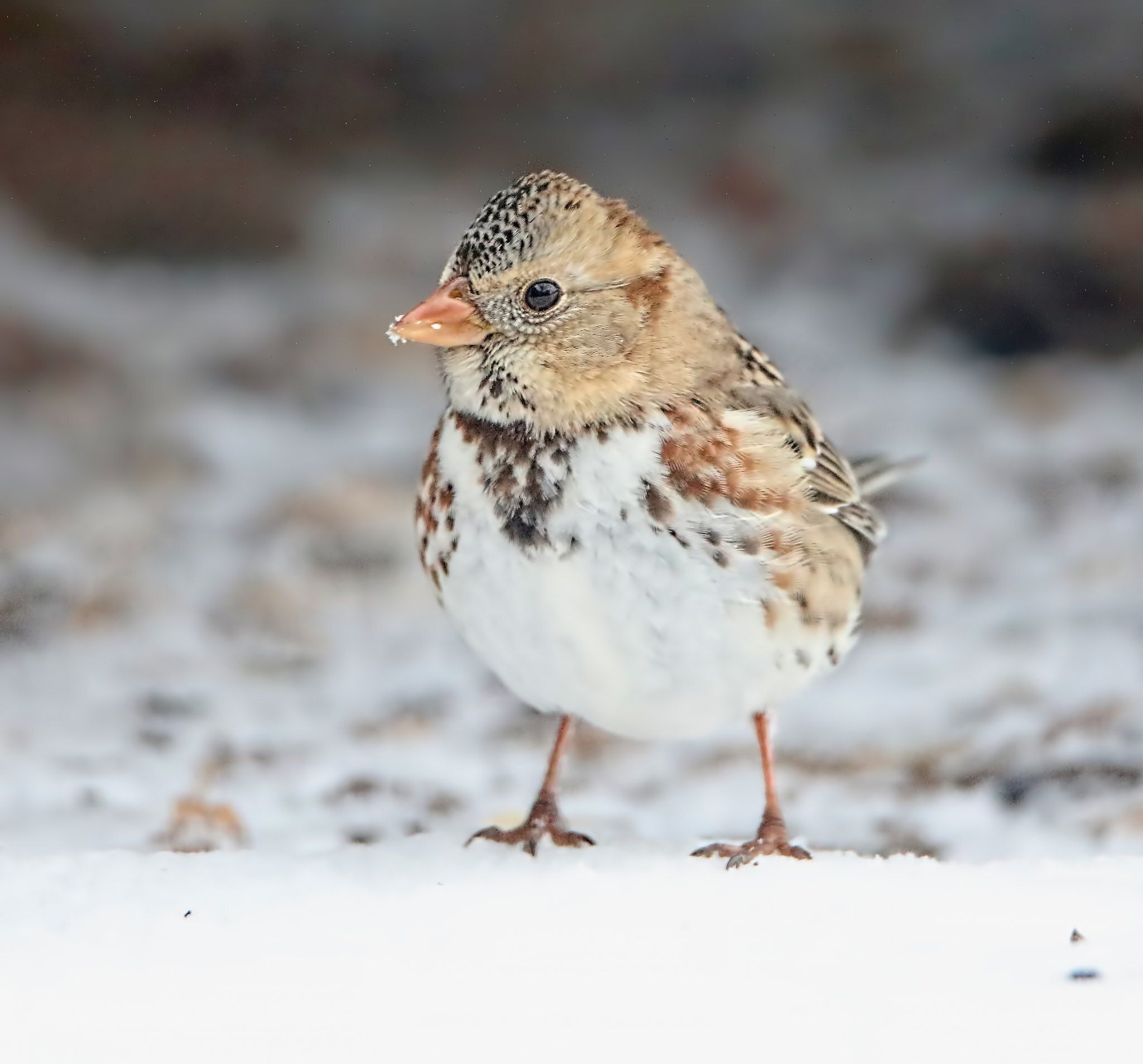
Photo of Harris Sparrow by Elizabeth Winter
When the weather outside is frightful, and your inner fire is so delightful … why not bird, why not bird, why not bird?
The New York Times Wirecutter tracks trends showing how to get from Point A to Point B with maximum efficiency. Wirecutter contributor Dan Koeppel recently focused his attention — and binoculars — on birding. From your window. Here are some timely tips from his column to help you weather the weather. Remember, as someone once said, “Winter is coming.”
A whole new world
“When you embrace birding, the world opens up to you,” observes Nick Lund, author of “The Birdist’s Rules of Birding” blog, quoted in Koeppel’s article. Birder numbers are soaring, with more than 45 million watchers accounting for an economic impact of $41 billion a year, based on US Fish and Wildlife Service estimates.
Koeppel and his father (an avid birder) weren’t exactly birds of a feather, at least in the beginning. It took years for Koeppel’s interest to take off. Birding “seems beyond geeky to some, but once you start looking at it as a sport, or a game, it becomes deeply fascinating,” if not an obsession, he writes.
Identification, classification/counting and unpredictability combine to offer soul-satisfying skills to those willing to invest the time to take up birding. Koeppel breaks down birdwatching into three steps.
1. Observing the bird
Most beginning (and grizzled) birders can probably see a lot of birds through their windows, from the comfort of their own home, he notes, especially if they’ve set up a feeder. Dawn and dusk are particularly good times to catch a glimpse of a few of the more than 900 species of birds in the U.S. To amplify your experience, Koeppel suggests purchasing a pair of binoculars. For less than $300, he says you can buy an “excellent pair.” Wirecutter recommends the Athlon Optics Midas ED (8 x 42), with several more options across a variety of price points and performance capabilities described on Wirecutter’s website.
Seeing birds is just the beginning, he cautions. You will need to look more closely to pinpoint particular characteristics, such as the color, size, and shape of wings, beak and body. Try to observe birds in motion: what they’re doing will provide clues as to who they are, which is Step 2.
2. Identifying the bird
Finding the right field guide to help you identify the birds you see is an absolute necessity, Koeppel emphasizes. His recommendations? Kenn Kaufman’s Field Guide to Birds of America and any of David Sibley’s “excellent manuals.” And here’s an insightful pro tip: Keep a guide in your bathroom so you can study it on a, more or less, regular basis.
Illustrated bird cards also make Koppel’s list of helpful hints, especially if you leave one by your window. He adds that regional bird cards are available for most states.
App-based guides are good, too, he says, naming the Merlin Bird ID app, created by the Cornell Lab of Ornithology, calling it, “free, comprehensive and efficient,” and noting that it includes a database of sound recordings of bird calls/songs.
In case you’re wondering, Koeppel highly recommends that readers get involved with their local Audubon chapter, and even offers a link to an Audubon article on “out-the-window, urban birding.”
3. Documenting the bird
Finally, make a list. Make drawings. Keep a record of times and places you observe your feathered friends. There are even global communities of “listers.” Koeppel says Cornell’s free eBird includes “built-in checklist tools” that can help you contribute to “a global database of bird sightings.”
Making connections
It’s one thing to connect to nature. It’s quite another to connect across generations. Over several decades of birding, Koppel’s father identified 200 species on his “yard list.” Koeppel made a deathbed promise to his father that he would identify a bird that had successfully eluded his dad. It took him five years, but Koeppel finally found it. He probably found a little more of himself, too.

